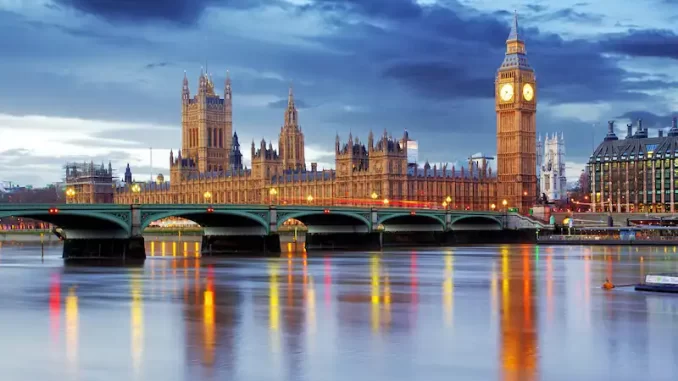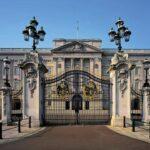
Last Updated on by Sabina
Big Ben London, an iconic symbol of London and the United Kingdom, stands tall and proud, resonating with history, tradition, and the spirit of the British people. Towering above the Houses of Parliament, this majestic clock tower has become a landmark that captivates visitors from around the world. In this article, we delve into the captivating world of Big Ben, exploring its history, remarkable features, and its enduring significance in the cultural fabric of London and the United Kingdom.

A Timeless Legacy
Historical Origins Big
Big Ben, originally known as the Great Bell, is part of the Elizabeth Tower, which stands at the north end of the Palace of Westminster. Completed in 1859, it was designed by the architect Augustus Pugin in the Victorian Gothic style. The tower, named after Queen Elizabeth II, serves as a lasting tribute to the Queen’s long reign.
The Bell and Its Name
The Great Bell, which resides within the Elizabeth Tower, weighs a staggering 13.5 tons and has a diameter of 7 feet. It was cast by the Whitechapel Bell Foundry and installed in the tower in 1858. The bell received its famous nickname, “Big Ben,” after Sir Benjamin Hall, the Commissioner of Works at the time of its installation. However, some debate persists over whether the name refers specifically to the bell or the clock tower as a whole.
Architectural Splendor
Towering Height and Structure
Big Ben’s tower soars to an impressive height of 316 feet, commanding attention on the London skyline. The tower’s intricate Gothic details, including pointed arches, ornate carvings, and delicate spires, evoke a sense of grandeur and timelessness. It serves as a testament to the architectural mastery of the Victorian era.
The Clock Faces
Big Ben features four clock faces, each measuring over 23 feet in diameter. These iconic clock faces, adorned with Roman numerals and elegant black hands, are illuminated at night, casting a warm glow over the city. The precision and accuracy of the clock mechanism have made it a reliable timekeeper for over a century and a symbol of London’s punctuality.
Timekeeping Tradition
Chiming Melodies
Big Ben’s deep and melodious chimes have become an integral part of London’s auditory landscape. The hour chimes resonate across the city, marking the passage of time with a sonorous “BONG.” The clock’s hourly chimes are accompanied by shorter quarter-hour chimes, creating a captivating symphony that has become synonymous with London.
Symbolic Significance Beyond its practical function
Big Ben holds symbolic significance for the people of London and the United Kingdom. It represents the steadfastness, resilience, and reliability of the nation. It has withstood the test of time, serving as a constant reminder of the nation’s endurance and its commitment to tradition and history.
Cultural Landmark
Tourist Attraction
Big Ben has become an iconic tourist destination, drawing visitors from all corners of the globe. The tower’s magnificence, coupled with its historical and cultural significance, makes it a must-visit landmark for those exploring London. Visitors can marvel at its architecture, learn about its history, and soak in the vibrant atmosphere of this bustling city.
National Symbolism
Big Ben’s iconic presence has made it a symbol of London and the United Kingdom as a whole. Its image is often associated with the city in advertisements, movies, and photographs, becoming an instantly recognizable representation of British heritage. It stands as a proud emblem of the nation’s history, culture, and unwavering spirit.


